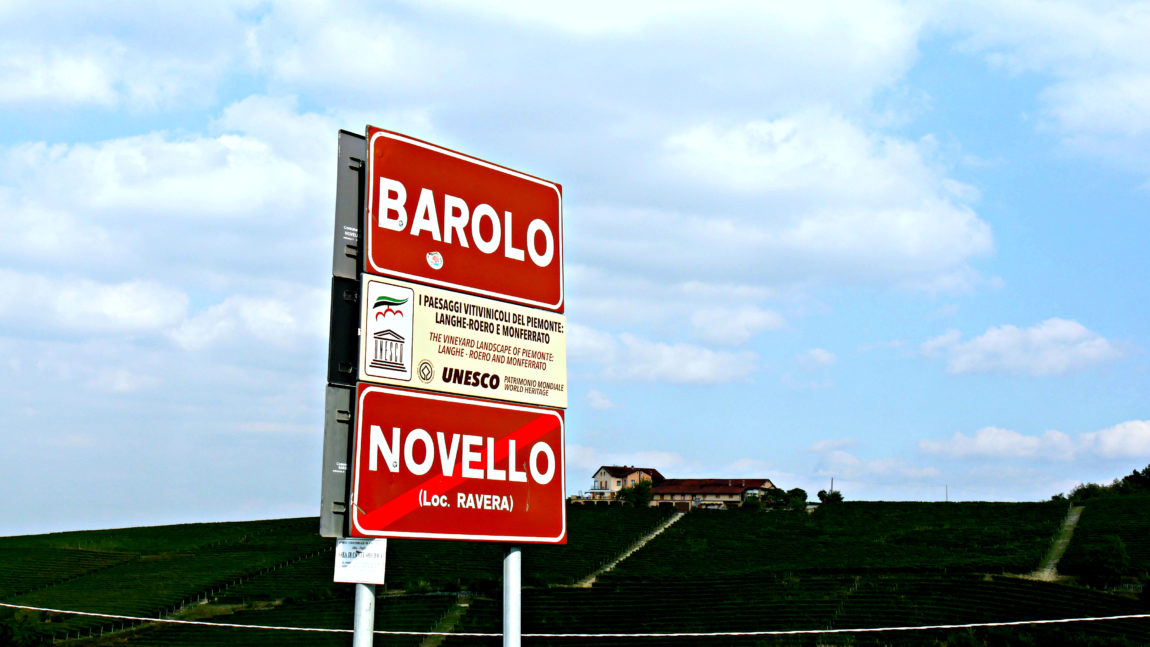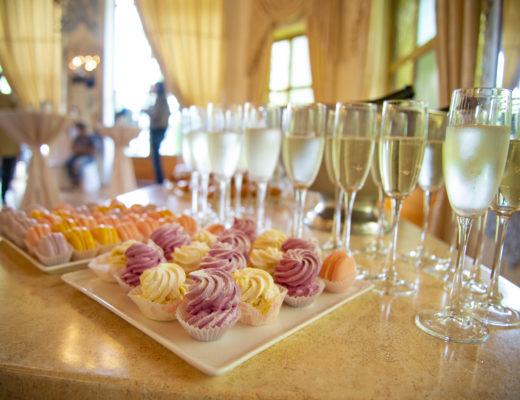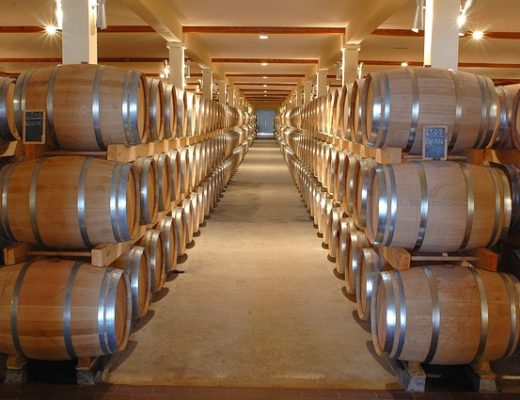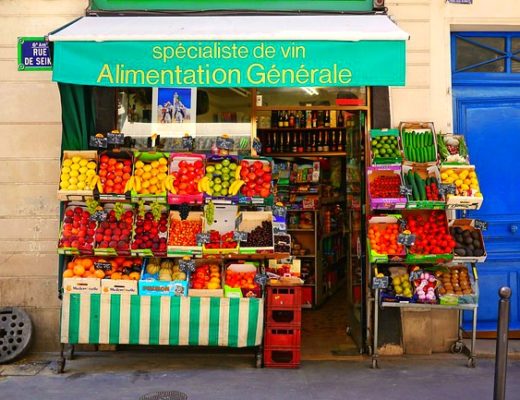It’s a very rare occasion that I turn down an invitation to the Synergy loft in downtown Denver. So, an invite to a Master Class with Barolo winemaker Guiseppe Vaira hosted by Guiliana Imports garnered an instant RSVP. Despite the massive thunderstorm and hail that came through the city center as we were arriving, it was unsuccessful in dampening our spirits.
There’s been a noticeable uptick in Barolo tastings, and I think it has to do with the consistent quality that continues to come from the area (which lies in Northwest Italy’s Piedmont region). The 2013 and 2014 vintages are currently on offer from producers, importers and distributors. This is due to the strict regulations that apply to Barolo wine. Wine must come from the Nebbiolo varietal, be aged at least two years in barrel, and subsequently at least one year in the bottle prior to being released. This explains why you can’t find a 2016 Barolo on the shelf at your local wine shop. Although, when you do see the 2016s, buy as many as you can. The phenomenal growing conditions make this vintage one for the ages.
Energy and Passion
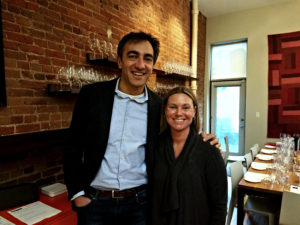
A quick pic of Guiseppe Vaira and myself before the class got started.
Since I’m jumping ahead of myself, let’s get back to present day. I always try to carve out a few moments before an event to chat with the winemaker. Guiseppe was engaging, knowledgeable, and enthusiastic in that unmistakable Italian manner. He was also very adamant that the class format should involve a heavy emphasis on our questions as opposed to him lecturing for the full time.
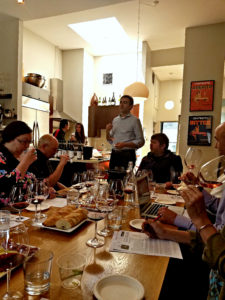
Guiseppe Vaira explaining the differences in terroir and how this translates to different flavor profiles within Barolo.
Family History and the Importance of Tradition
Guiseppe spoke fondly of his father Aldo who took the family vineyard in Bricco delle Viole to an even higher metaphorical level than its highest cru status would imply. With the vineyards of Bricco della Viole, Fossati, La Volta, and Coste di Vergne, lying on the western portion of Barolo, the wines of G.D. Vajra have continued to captivate wine lovers due to their subtle, elegant and almost “Burgundian” power structure, as opposed to the unabashed raw power of other areas within the region. This restrained and refined level of elegance imbedded in family tradition ultimately led to a partnership with Luigi Baudana. The partnership’s origins were shared through a series of hilarious anecdotes, one of which involved an incognito meeting, shrouded in secrecy, using an old blue Fiat for transportation as to not call attention to its passengers, best told by Guiseppe.
The Parade of Wines
GD Vajra, Rosabella, 2017 – A Rosé blend of Nebbiolo, Barbera, and Dolcetto, this shows complexity that rivals the best Rosés from Provence. Aromatic through to the core with roses, other perfumed florals, cherries, minerality, and herbaceous notes. This Rosé is layered on the palate as well. Evolving nicely from start to finish.
GD Vajra, Barolo, Albe, 2013 – “A tribute to the Masters of Barolo” who used blending techniques, just as this wine does, to show the best characterization of Barolo. The higher elevation vineyards provide a fruity, yet lovely barnyard component to the wine and the 30-36 months of Slavonian oak cask aging gives it a subtle spicy note. A beautiful introductory tier wine.
GD Vajra, Barolo, Bricco delle Viole, 2014 – There’s no denying it, I love this wine. 2014 had its challenges, no doubt, but for top quality producers like GD Vajra it’s just an invitation to beat the odds. Fresh and minty aspects mingle with a mineral feature, before giving way to the cherry and strawberry fruit profile. While it’s not exactly tight, the wine has a more woven characteristic that will continue to improve with time, perhaps attributed to the vineyard’s proximity to the Alps and its more than adequate sun exposure due to it’s elevation and aspect. Nuanced tannins project a balanced finish.
GD Vajra, Barolo, Ravera, 2014 – Deep and concentrated on both the nose and the palate. Herbs, spices and dark fruit reflect the lower elevation and the unique geological components that reside in the iron-rich soil. Aged an average of 30 months in Slavonian oak casks.
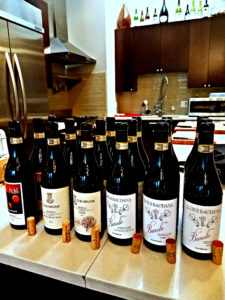
From left to right: Barolo Albe 2013, G.D. Vajra Barolo Bricco delle Viole 2014, G.D. Vajra Barolo Ravera 2014, Luigi Baudana Barolo Serralunga 2014, Luigi Baudana Cerretta 2014, and Luigi Baudana Barolo Baudana 2014
Luigi Baudana, Barolo, 2014 – Through meticulous sorting of fruit from “younger” vines (averaging 40+ years) and an aging regiment of 32 months in Slavonian oak casks, this is a bright depiction of Serralunga with weighty tannins and depth of structure.
Luigi Baudana, Barolo, Cerretta, 2014 – Dried floral notes, most notably violet, carry this gorgeous organic selection to the next level. The tones of the wine accurately reflect the shift from “power to elegance” and “red fruit to dried fruit” which Guiseppe demonstrated with a simple compass-like visual aid. This is clearly the more “classic” style of the two single vineyards.
Luigi Baudana, Barolo, Baudana, 2014 – This was my favorite of the flight. Hints of mocha and cocoa along with more of the dried fruit notes (hallmarks of Baudana wines). The tannins start early on the palate and are consistent throughout, showing a presence without being glaring. The finish is long and works lovely with a bit of charcuterie.
Wrapping up
With over 170 crus and even more vineyards in the 25 square mile area that is Barolo, it’s easy to go further and further into the rabbit hole to gather as much information as possible from this influential region. As with most facets of the wine world, you must then just ask yourself, how far would you like to go?
Header Photo Credit - Paolo G/Shutterstock.com

